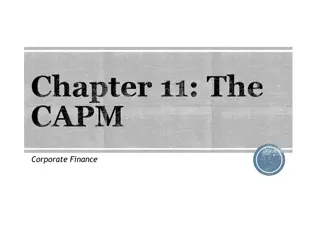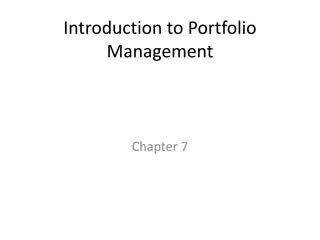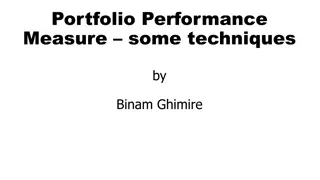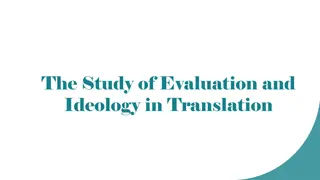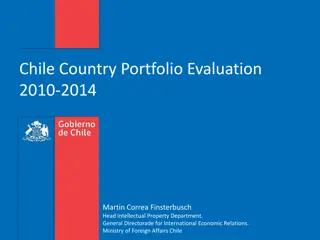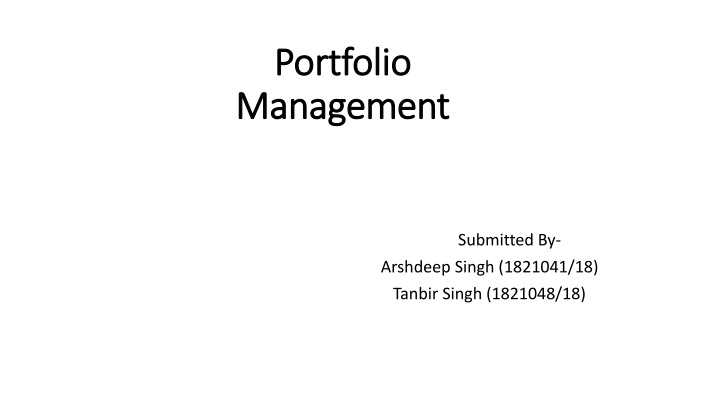
Portfolio Management for Financial Success
Learn about portfolio management, the art of selecting and overseeing investments to achieve long-term financial goals. Discover how it reduces risk, aids decision-making, and guides in building the best investment portfolio through phases like security analysis, portfolio selection, and revision.
Download Presentation

Please find below an Image/Link to download the presentation.
The content on the website is provided AS IS for your information and personal use only. It may not be sold, licensed, or shared on other websites without obtaining consent from the author. If you encounter any issues during the download, it is possible that the publisher has removed the file from their server.
You are allowed to download the files provided on this website for personal or commercial use, subject to the condition that they are used lawfully. All files are the property of their respective owners.
The content on the website is provided AS IS for your information and personal use only. It may not be sold, licensed, or shared on other websites without obtaining consent from the author.
E N D
Presentation Transcript
Portfolio Portfolio Management Management Submitted By- Arshdeep Singh (1821041/18) Tanbir Singh (1821048/18)
What is Portfolio Portfolio Management Management Portfolio management is the art and science of selecting and overseeing a group of investments that meet the long-term financial objectives and risk tolerance of a client, a company, or an institution. Portfolio management requires the ability to weigh strengths and weaknesses, opportunities and threats across the full spectrum of investments. The choices involve trade-offs, from debt versus equity to domestic versus international and growth versus safety
Needs:- 1. Reduces the risk without reducing returns. 2. Helps investors in rational decision making. 3. Helps to select best investment portfolio.
Phases of Portfolio Management Phases of Portfolio Management Security Analysis Portfolio Analysis Portfolio Selection Portfolio Revision Portfolio Evaluation
Security Analysis The securities available to an investors for investment are numerous and of various type. The share of over 700 companies are listed in the stock exchange of the country. Traditionally, the securities were classified into ownership securities such as equity share and preference share and creditorship securities such as debenture and bonds. First phase Detailed evaluation and analysis of various type of securities Risk-return by investors Security Analysis is the initial phase of the portfolio management process. This steps consists of examining the risk-return characteristic of individual securities. A basic strategy in securities investment is to buy underpriced securities and sell overpriced securities
Portfolio Analysis A portfolio is a group of securities held together as investment. Investors invest their funds in a portfolio of securities rather than in a single security because they are risk averse. By constructing a portfolio, investors attempt to spread risk by not putting all their eggs into one basket. Thus, diversification of one s holding is intended to reduce risk in investment . Each securities identified as part of a portfolio is analyzed for risk and return No of portfolios are reviewed to determine the best possible Securities analysis provide the investors with a set of worthwhile or desirable securities. From this set of an indefinitely large no of portfolio can be constructed by choosing different set of securities and also by varying the proportion of investment in each securities
Portfolio Revision Having constructed the optimal portfolio , the investors has to constantly monitor the portfolio to ensure that it contains to be optimal. As the economy and financial market are dynamic, change take place almost daily. As time passes, securities which were once attractive may cease to be so. New securities with promise of high return and low risk may emerge. The investor now has to revise his portfolio in the light of the development in the market. This revision leads to purchase of some new securities and sale of some of the existing securities from the portfolio Continuous monitoring of the portfolio is required so that it does not deviate from the optimal combination
Portfolio Selection Portfolio analysis provide the input for the next phase in portfolio management which is portfolio selection. The goal of portfolio construction is to generate a portfolio that provide the highest returns at a given level of risk. A portfolio having this characteristic is know as an efficient portfolio. The inputs from portfolio analysis can be used to identify the set of efficient portfolio. From this set of efficiency portfolios, the optimal portfolio has to be selected from investment Securities for building each portfolio are selected with the goal of providing greater returns at a given level of risk Portfolio selection helps in selecting one or more optimal portfolio
Objective of Objective of Portfolio Portfolio 1. Current income 2. Growth in income 3. Capital Appreciation 4. Preservation of capital 5. Consistent Return
PORTFOLIO MANAGEMENT PROCESS 1. Identification of objectives. 2. Selection of the asset mix 3. Formulation of portfolio strategy. 4. Security Analysis 5. Portfolio Execution 6. Portfolio Revision 7. Portfolio Evaluation
IDENTIFICATION OF OBJECTIVES: The portfolio management should focus on the objectives of an investor in first place. Without clarity in goals an efficient portfolio cannot be made. For Example, The objective of an Investor may be to generate maximum income with minimum amount of risk.
SELECTION OF THE ASSET MIX. The next major step in portfolio management process is identifying different assets that can be included in portfolio in order to spread risk and minimize loss. In this step, the relationship between securities has to be clearly specified. Portfolio may contain the mix of Preference shares, equity shares, bonds etc. The percentage of the mix depends upon the risk tolerance and investment limit of the investor.
FORMULATION OF PORTFOLIO STRATEGY After certain asset mix is chosen, the next step in the portfolio management process is formulation of an appropriate portfolio strategy There are two choices for the formulation of portfolio strategy, namely 1.An active portfolio strategy 2.A passive portfolio strategy. An active portfolio strategy attempts to earn a superior risk adjusted return by adopting to market timing, switching from one sector to another sector according to market condition, security selection or an combination of all of these. A passive portfolio strategy on the other hand has a pre-determined level of exposure to risk. The portfolio is broadly diversified and maintained strictly.
SECURITY ANALYSIS Security analysis requires the sources of information on the basis of which analysis is made. Securities for the portfolio are analyzed taking into account of their price, possible return, risks associated with it etc. As the return on investment is linked to the risk associated with the security, security analysis helps to understand the nature and extent of risk of a particular security in the market.
PORTFOLIO EXECUTION When selection of securities for investment is complete, the execution of portfolio plan takes the next stage in a portfolio management process. Portfolio execution is related to buying and selling of specified securities in given amounts. As portfolio execution has a bearing on investment results, it is considered one of the important step in portfolio management.
PORTFOLIO REVISION Portfolio revision is one of the most important step in portfolio management. A portfolio manager has to constantly monitor and review securities according to the prevailing market conditions. Revision of portfolio includes adding or removing securities , shifting from one stock to another or from stocks to bonds and vice versa.
PERFORMANCE EVALUATION Portfolio manager has to assess the performance of portfolio over a selected period of time. The quantitative measurement of actual return realized and the risk borne by the portfolio over the period of investment is called performance evaluation. They are compared against the objective norms to assess the relative performance of the portfolio. Performance evaluation gives a useful feedback to improve the quality of the portfolio management process on a continuous basis.
CALCULATING EXPECTED RATE OF RETURN To calculate the expected return of a portfolio, the investor needs to know the expected return of each of the securities in his portfolio as well as the overall weight of each security in the portfolio. That means the investor needs to add up the weighted averages of each security's anticipated rates of return (RoR) The weight applied to each return is the fraction of portfolio invested in that security.
EXAMPLE: Let us consider a portfolio of two equity shares P and Q with expected returns of 15 percent and 20 percent respectively. If 40 percent of total funds is invested in share P and the remaining 60 percent in share Q , then the expected portfolio return will be : (.40 X 15) + (.60 X 20 ) = 18 percent.
Calculation of Risk The variance or standard deviation of an individual security measures the riskiness of security in absolute sense. For calculating the risk of a portfolio of securities, the riskiness of each security is to be considered. This depends on the interactive risk, i.e. how the returns of a security move with the returns of other securities in the portfolio and contribute to the overall risk of the portfolio.
The covariance is a measure of how returns of two securities move together. If the returns of the two securities move in the same direction consistently the covariance would be positive. If the returns of the two securities move in the opposite direction consistently the covariance would be negative. If the movements of returns are independent of each other, covariance would be close to zero.
Portfolio Evaluation Portfolio Evaluation is a stage where we examine to what extent the investment objective has been achieved. The portfolio of securities held by an Investors is the result of his investment decisions. It is essentially the process of comparing the return earned on a portfolio with the return earned on one or more other portfolios or on a benchmark portfolio.
RISK ADJUSTED RETURNS Risk free rate of interest is the return that an investor can earn on a riskless security, that is without bearing any risk. The return earned over and above the risk free rate is the risk premium that is the reward for bearing risk. If this risk premium is divided by measure of risk , we get the premium per unit of risk. Two methods to measure the reward per unit : 1. Sharpe Ratio 2. Treynor Ratio
Sharpe Ratio Sharpe ratio is also known as reward to variability ratio. A portfolio with a higher Sharpe ratio is considered superior relative to other portfolios. The measure was named after William F Sharpe. Formula- {R (p) R (f)} /s (p) R (p): Portfolio return R (f): Risk free rate of return s (p): Standard deviation of the portfolio
Treynor Ratio Treynor ratio shows the risk adjusted performance of the fund. Here the denominator is the beta of the portfolio. Thus, it takes into account the systematic risk of the portfolio. Formula - (Rp-Rf)/Beta where, Rp: Return on the portfolio Rf: Risk free rate Beta- the sensitivity of the portfolio to changes in the overall market.







